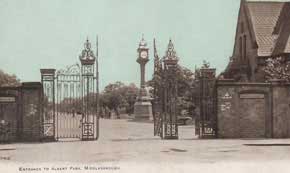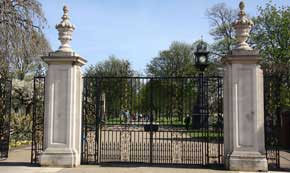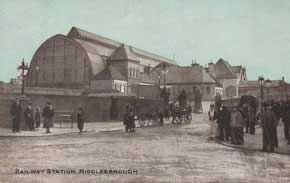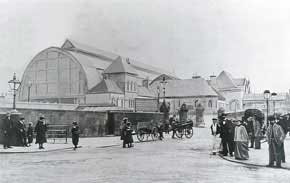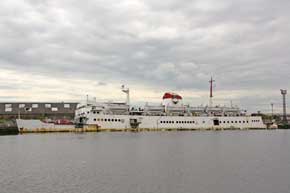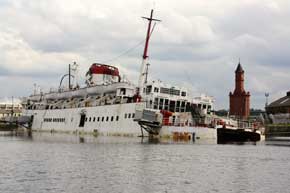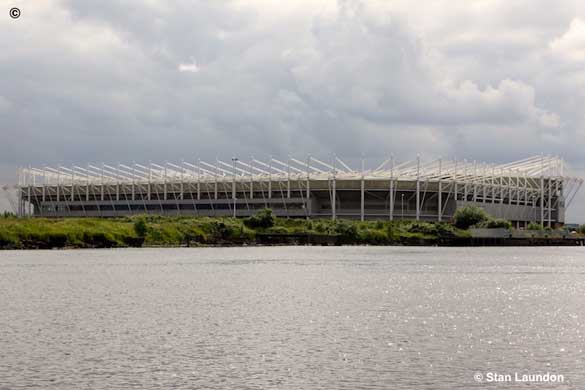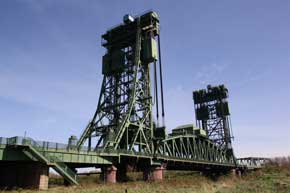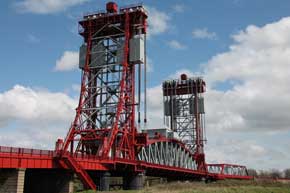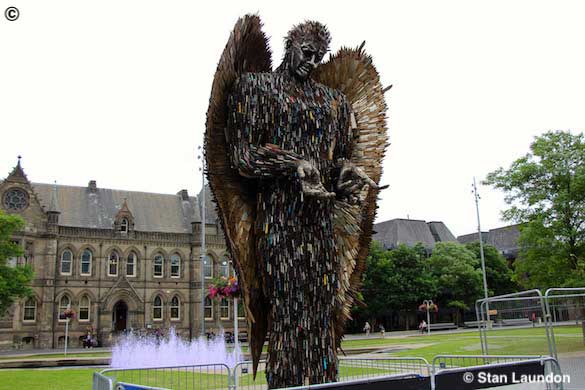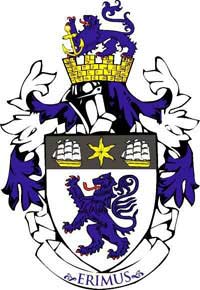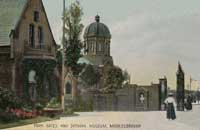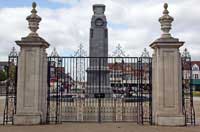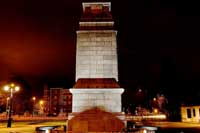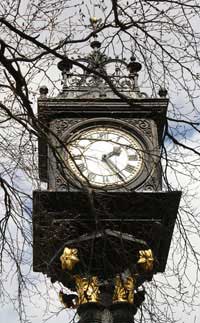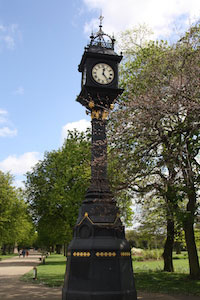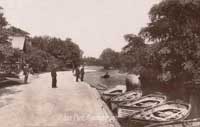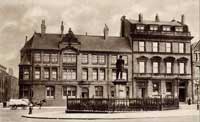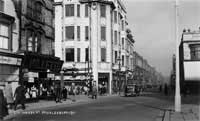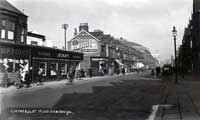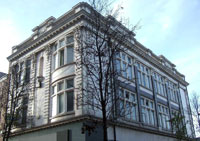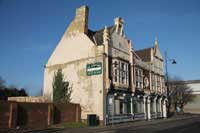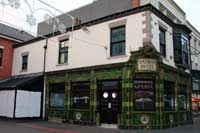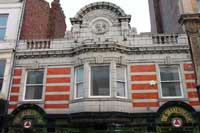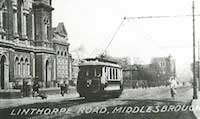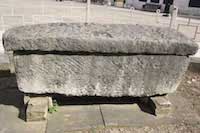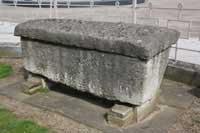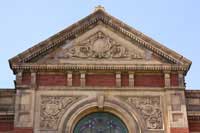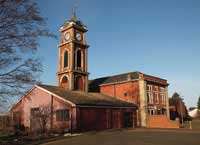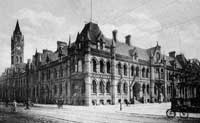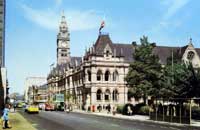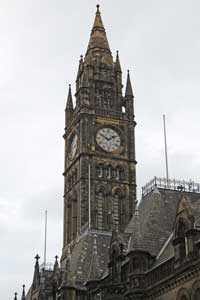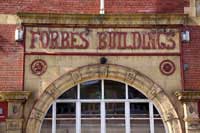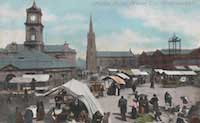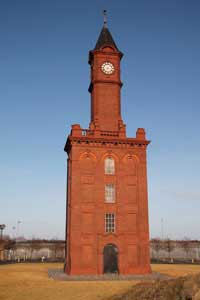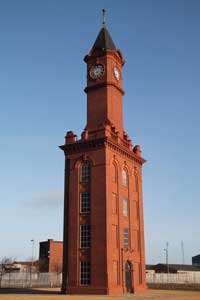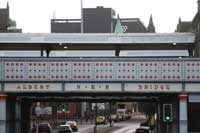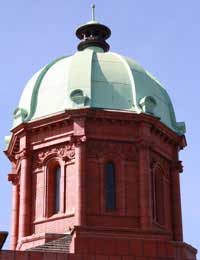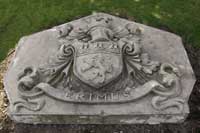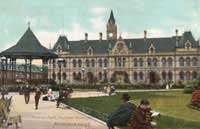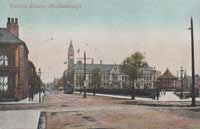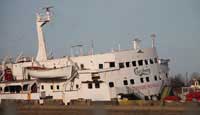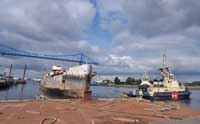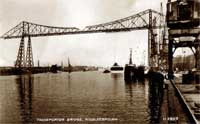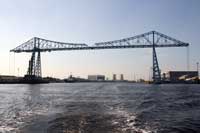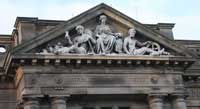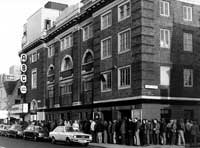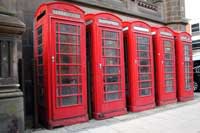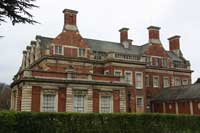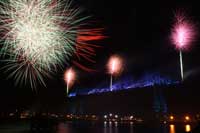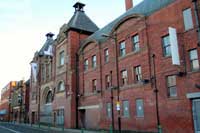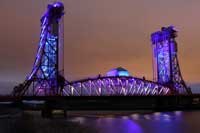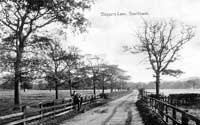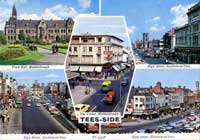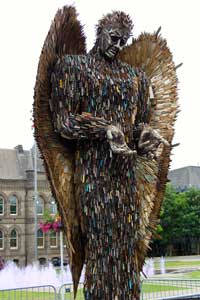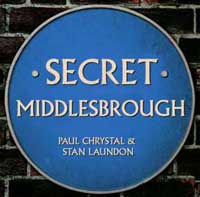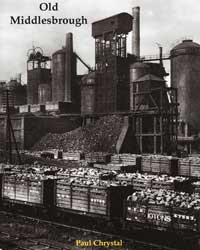MIDDLESBROUGH
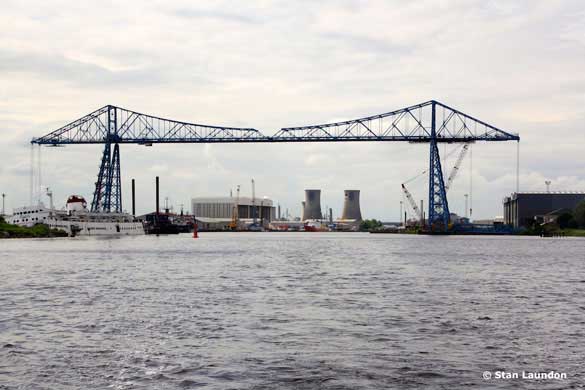
Middlesbrough is a large industrial town situated on the south bank of the River Tees in North Yorkshire, England and was my home for almost 20 years during the 1970's. Although I no longer live there it's a town I still have fond memories of. One of Middlesbrough's most famous landmarks - The Transporter Bridge - was designed by the Darlington-based Cleveland Bridge & Engineering Company, constructed by Sir William Arrol & Company and opened on October 17th, 1911 at a cost of £87,316. Often threatened with closure in the past, it is now seen as Teesside’s iconic symbol. The bridge survived German bombing raids in both world wars – by a Zeppelin in 1916 and by a bomber plane in 1940.
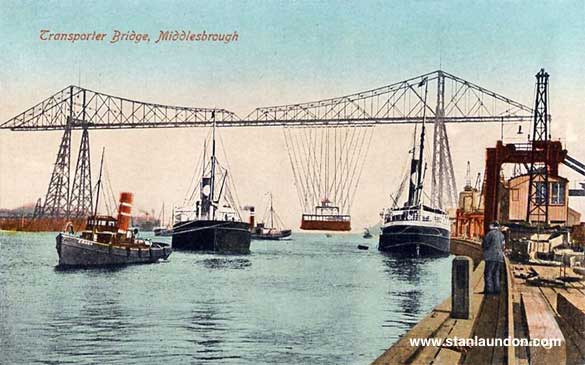
An old postcard showing the Transporter Bridge in Middlesbrough. The Transporter was famously featured in the TV series "Auf Wiedersehen, Pet", in the film "Billy Elliot" and on the video and cover of the single "High" by the Lighthouse Family. In March 1974, funnyman Terry Scott wrote off his Jaguar when driving it straight off the Transporter’s approach road as he believed it to be a normal bridge.
Albert Park gates then and now. The first image showing an old postcard and a more modern photograph - copyright © Stan Laundon. How nice, too, to see the Grade II listed Memorial Clock inside the park. Clicking on the images will open them in a slightly larger size.
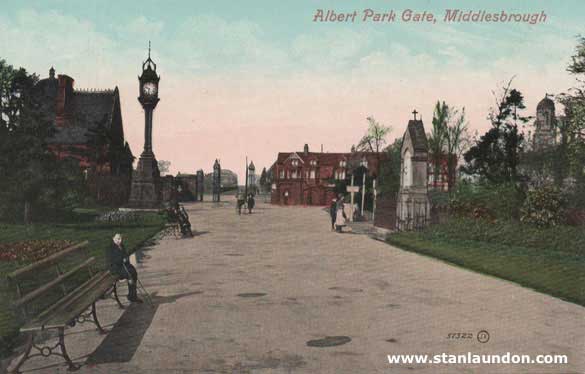
A postcard showing Albert Park gates and the Memorial Clock from inside the park.
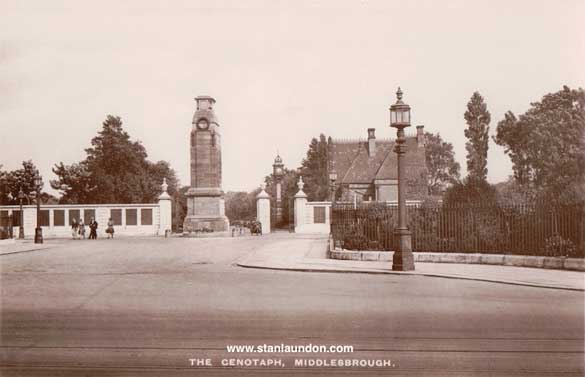
Another old postcard - but this time showing the cenotaph and looking towards the Albert Park gates and the Memorial Clock.
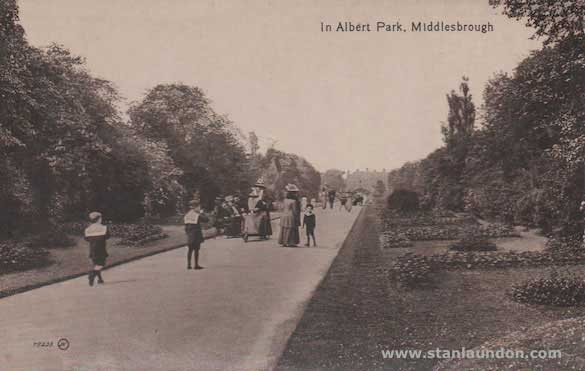
Albert Park yet again - and note the old style dress on the young boys and ladies.
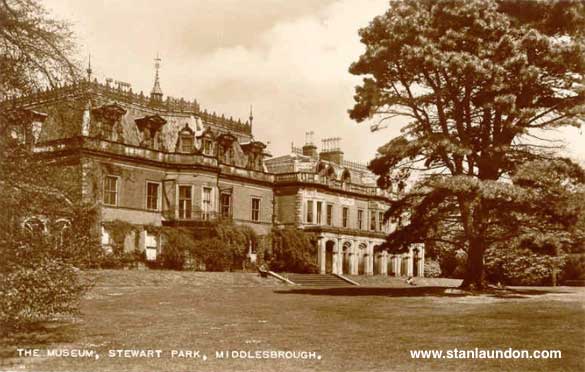
The Museum in Stewart Park, Middlesbrough. The park covers approximately 120 acres of mature woodland and houses the Captain Cook Birthplace Museum.
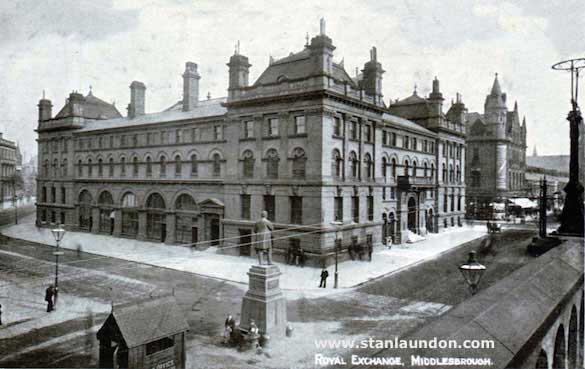
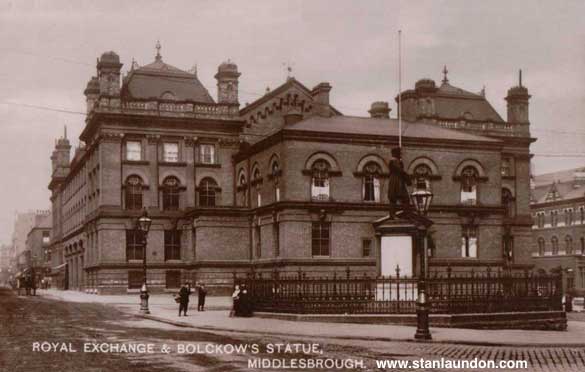
Two postcards of the Royal Exchange with the statue of Henry Bolckow in the centre of the postcards.

The Exchange and Post Office - another wonderful old postcard showing as it used to be!
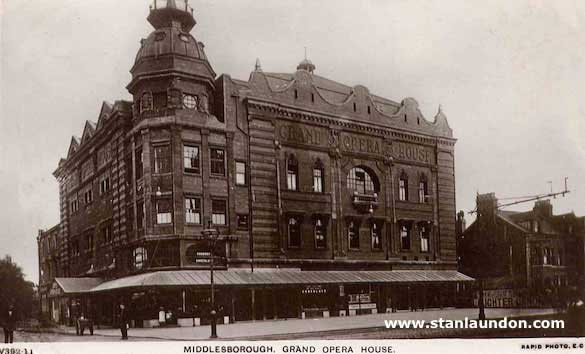
I can't help wondering how many people, like me, wish that some of these wonderful old buildings were still standing. This is The Grand Opera House and stunning it is, too - despite a spelling error on Middlesbrough!
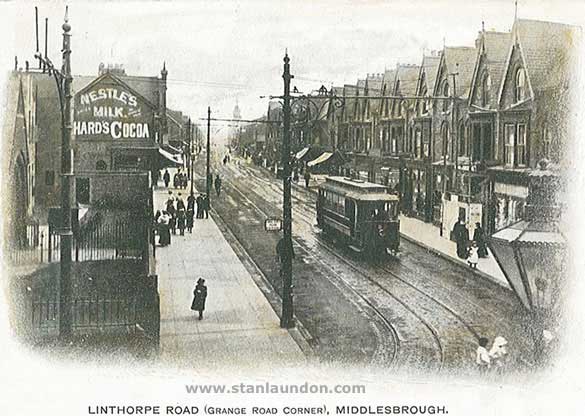
Linthorpe Road at the Grange Road corner and how nice to see those old painted advertising signs on the sides of buildings or 'ghost signs' as they are known.
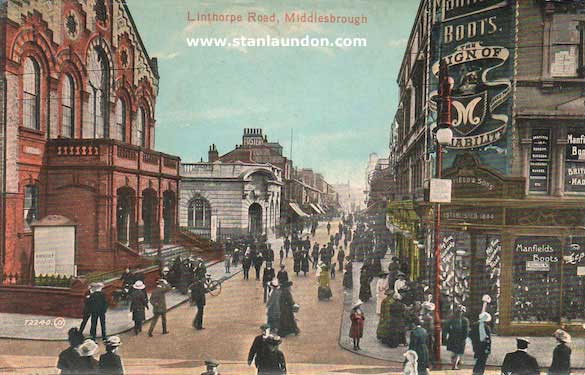
There's such a lot going on here with Boots the chemist on the right and the Manfield Boots store.

How times have changed here, too, with The Market Place in St. Hilda's.
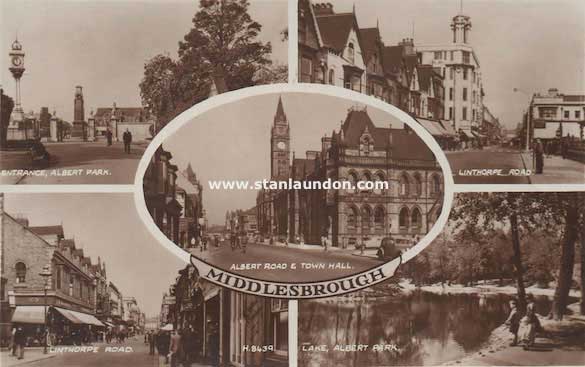
A picturesque postcard with various views of Middlesbrough showing Albert Park, Linthorpe Road, Albert Road & Town Hall and the Lake in Albert Park.
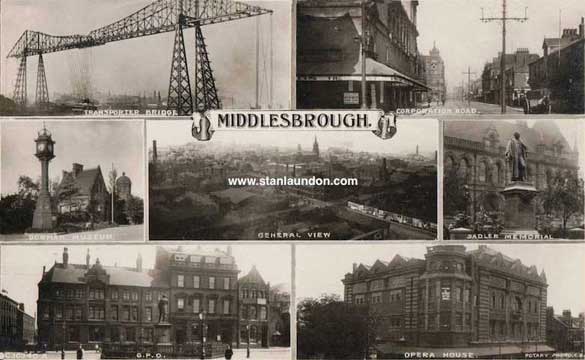
Another really old postcard showing more various scenes of Middlesbrough including a general view the town centre, the Transporter Bridge, Corporation Road, Dorman Museum, Sadler Memorial, General Post Office and the Opera House.
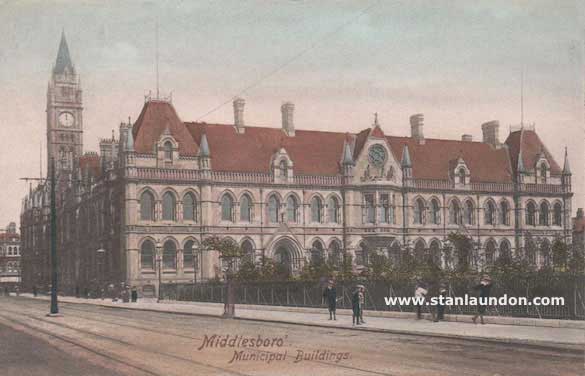
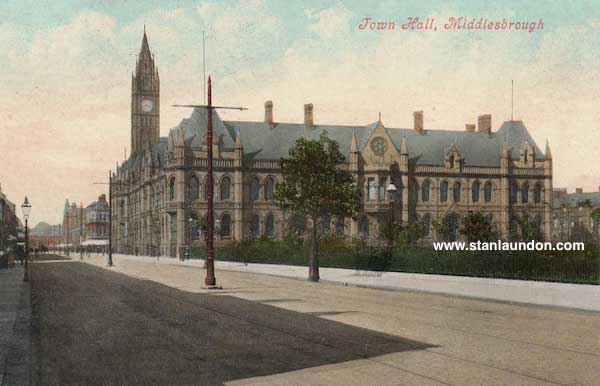
Two almost identical postcards showing the Town Hall and Municipal Buildings in Middlesbrough town centre.
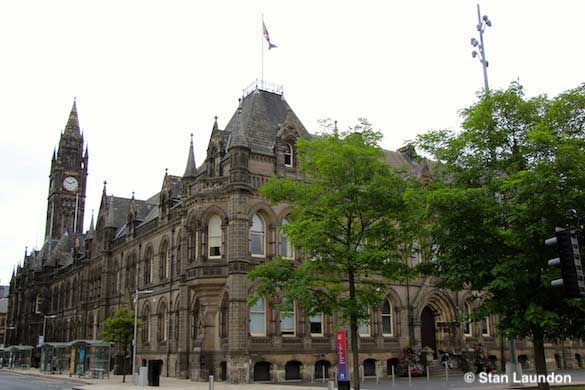
Middlesbrough Town Hall as seen from Corporation Road on a rather overcast late August day, 2019.

The Central Public Library in Victoria Square, Middlesbrough, was built between 1909 and 1912 by S.B. Russell and T.E. Cooper of London under part patronage of Andrew Carnegie. The building is Grade II listed.
These postcards date to 1904 and show a lot of activity outside Middlesbrough Railway Station. I know both cards look identical but, as one is colour and the other black and white, I thought I would include them on this page. They can be seen slightly larger by clicking on the images.

No date on this on I'm afraid but you can clearly see it's an old postcard showing the railway station as it was many years ago.
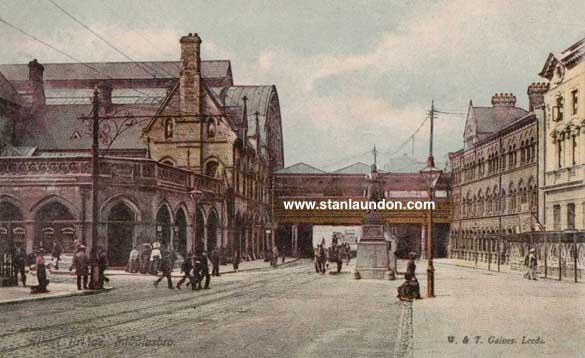
A lovely postcard, produced by W & T Gaines of Leeds, showing Albert Bridge with the railway station to the left.
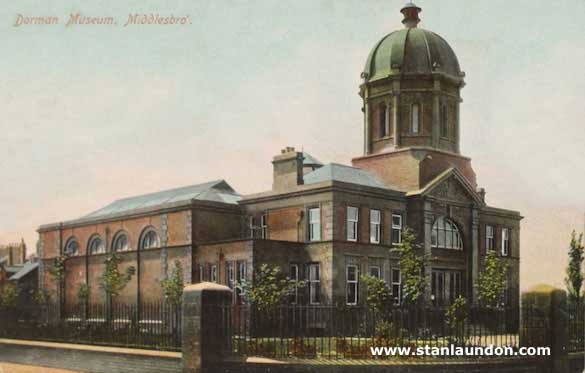
Another lovely old postcard showing the Dorman Museum in Linthorpe Road. You can see a close up photograph of the dome in the right hand column.
These two photographs of the "Tuxedo Royale" were taken in 2011 as the vessel was in a very sorry state on the River Tees. It was described, at the time, as a "potential hazard" and had been rusting at this location since 2011. During mid-October 2017 a final decision was made to have her moved to the Able Yard at Graythorp, near Hartlepool, to be scrapped.
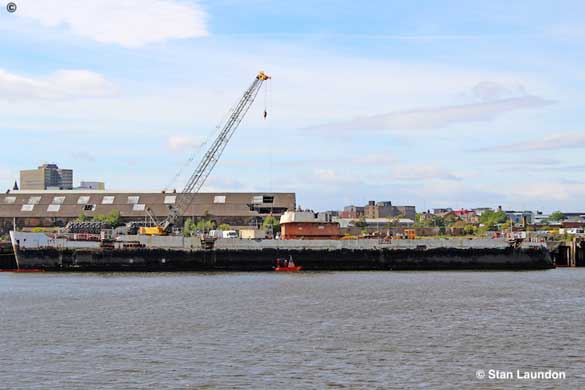
"Tuxedo Royale" as she looked during early September 2018 - still in a sorry state and still berthed on the River Tees.
"Tuxedo Royale" finally left the River Tees on Tuesday, September 10th, 2019 towed by the Svitzer tug "Fiery Cross" and headed to the Able Yard at Graythorp to be recycled. Photograph © Middlesbrough Council.

The former National and Provincial Bank in Cleveland Street was designed in 1872 by architect John Gibson. It is now the Cleveland Club.

This photograph of the ABC Cinema in Middlesbrough, at the junction of Borough Road and Linthorpe Road, is courtesy of Dusashenka's Old Cinema Photographs and used with thanks. At the time it was showing the Elvis Presley film "Roustabout" which dates to 1964. You can read more about the movie on the IMDB website.
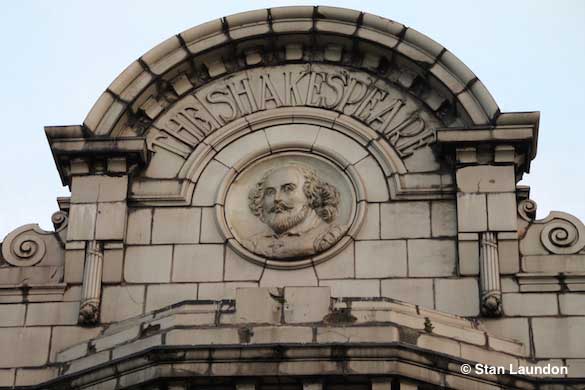
The stone engraving and architecture on The Shakespeare public house in lower Linthorpe Road is quite impressive. It is a Grade II listed building.
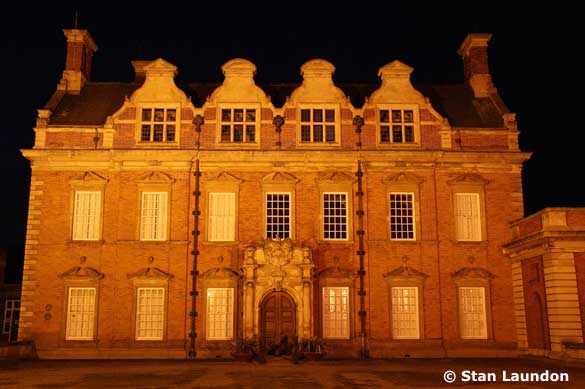
The Grade 1 listed building Acklam Hall at night. This manor house was built for Sir William Hustler in 1678 and was part of a large estate. The house was restored in 1845 and became a secondary school in 1936. It is one of the oldest and finest domestic buildings in Cleveland, England. At present it is run by Cleveland College.
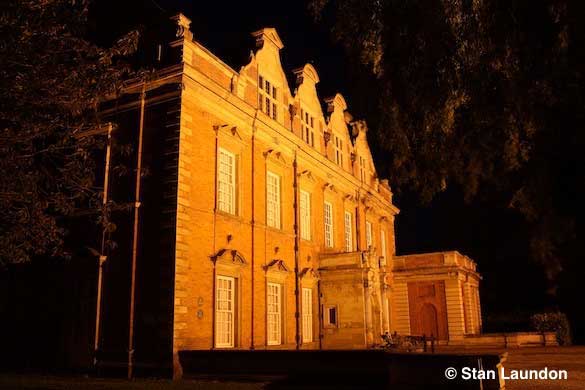
Another night image of the impressive Acklam Hall. You can see a series of internal photographs of this wonderful building on the Historic England website.
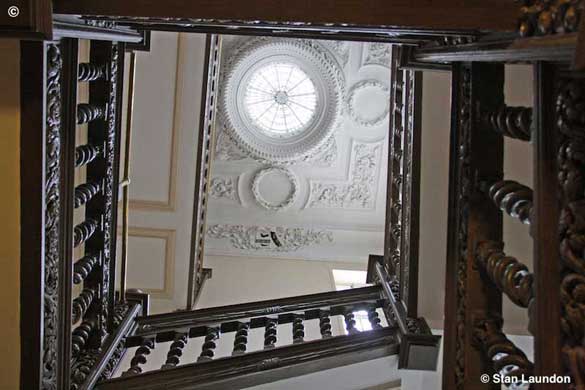
The staircase inside Acklam Hall, looking towards the beautifully carved ceiling dome. Acklam Hall is not open to the public so I was honoured to have gained access to record the inside of this beautiful building.
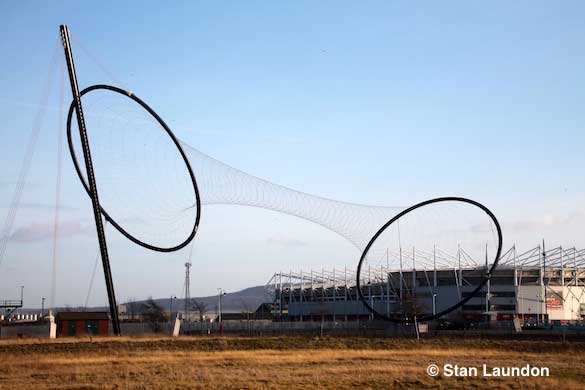
A more modern view of Middlesbrough with Temenos. This sculpture, by Anish Kapoor and Cecil Balmond, stands almost 164ft (50m) high and 360ft (110m) long. The giant dual-ringed public art installation was constructed in the Middlehaven area of the town in 2010 at a cost of £2.7m and took four months to piece together. Thousands of metres of steel wire were woven between the two steel rings to create the sculpture. The Riverside Stadium, home of Middlesbrough Football Club, can be seen to the right.
An unusual and impressive view of the Riverside Stadium - home of Middlesbrough Football Club. This was taken during a boat trip I made up and down the River Tees during July 2012.
Two photographs of Newport Bridge taken five years apart. The one of the left dates to 2011 with the newly painted one in May, 2016. The bridge was opened in 1934 as a “lifting bridge” which lifts horizontally between two towers supported on wire ropes at each end of the span. Teesside iron and steel works, Dorman Long, fabricated the steel for the bridge. Originally 12 men were employed to man the bridge around the clock and during the 1940s and 50s and average of 800 vessels per year would pass beneath it. The lifting mechanism was locked down permanently in 1990 and no longer raises.
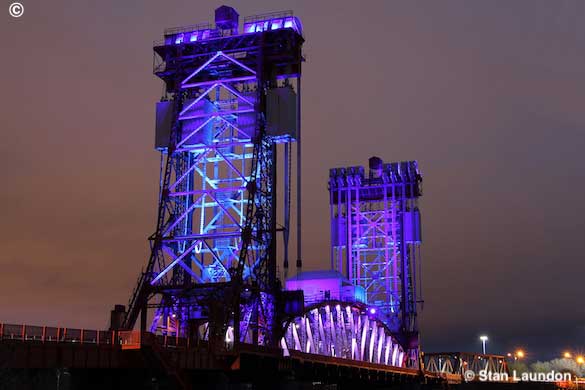
Newport Bridge, taken on Christmas Eve 2017, and dominating the night skyline with a grand array of lights for the winter season.
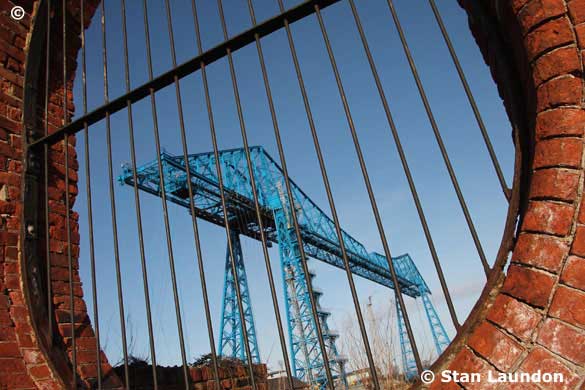
The photograph directly above is the Transporter Bridge, taken through the Vulcan Street Wall, and is from a book, which was released in August 2015, from Amberley Publishing titled "Secret Middlesbrough" by Paul Chrystal and Stan Laundon and sells for £14.99 or direct from Amberley's own website at £13.49.

The Vulcan Street Wall is also featured in a recent book by Paul Chrystal titled "Old Middlesbrough" which is released through Stenlake Publishing. You can read more about the book in the right hand column.
Teesside's latest piece of sculpture - the imposing Knife Angel - stood in the centre of Middlesbrough for a month and came to the North East after a six month tour of UK towns and cities. The 27ft tall figure is made from more than 100,000 surrendered knives, swords and other weapons, including blades handed in to Cleveland Police, and is inscribed with the names of knife crime victims and messages from their loved ones in a bid to bring the issue of knife crime to the fore. The Knife Angel was created by artist Alfie Bradley at the British Ironwork Centre in Oswestry, Shropshire. The Angel finally said goodbye to Middlesbrough’s Victoria Square on Sunday, September 1st, 2019.
Polite Notice:
Photographs on this site are © copyright to their respective owners and are not to be downloaded, or printed, for private use by individuals, organisations or social network sites. By viewing a digital image from this collection, you are agreeing to comply with copyright licensing regulations. These state that you will not copy, publish or distribute the image in any way. Please note, we have made every effort to ensure that copyright is not breached.
All modern photographs on this page are copyright © Stan Laundon unless otherwise stated and must not be copied, or used in any way, without prior written permission.
This website is not responsible for the content of external internet sites.
Copyright © Stan Laundon.com
Homepage / Andy Capp / Bands / Books / BBC Radio Teesside / Contact / Country Time / Flying Scotsman / Globe Theatre / Hartlepool / Hartlepool Monkey / Hartlepool At Night / Hartlepool History / Hartlepool Photography / Jerry Reed / Johnny Cash / Links / Memorabilia / Memories / Middlesbrough / NYMR / Old Hartlepool / Rink / RNLI / Search / Stars / Steam / Tornado / Wembley
